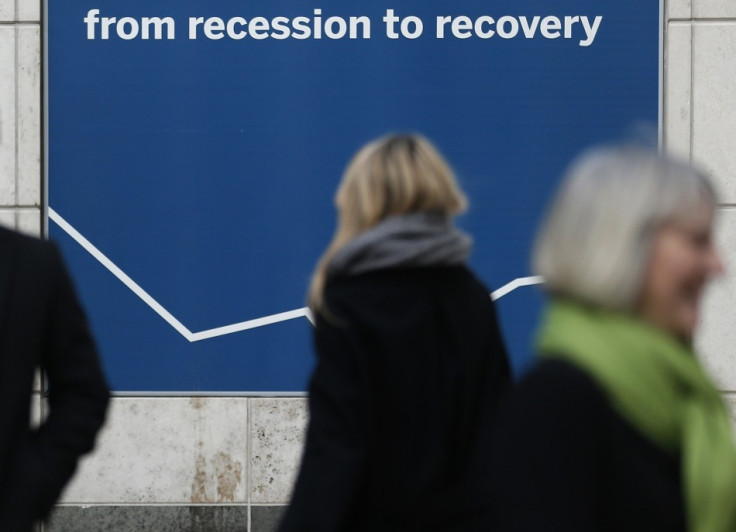UK Recovery 'Entrenched' as Consumer Spending Growth Hits Fastest Rate in a Decade

Britain's recovery from its slump after the financial crisis has become entrenched and consumer spending growth is set to hit its highest rate in over a decade during 2014, according to a forecast by the National Institute of Economic and Social Research.
In its Prospects for the UK Economy report, NIESR upgraded its 2014 UK growth forecast to 2.5% from a previous 2% estimate. Official figures show the UK economy grew by 1.9% in 2013, its fastest pace since 2007 at the dawn of the financial crisis.
The influential thinktank said consumer spending – the main driver of the UK recovery which is supported by a resurgent housing market – would grow by 3.4% during the same year. That would be the quickest rate since 2003.
Moreover, much-needed business investment in jobs and expansion would see a "rapid acceleration" with 9.6% growth on the year before.
"The UK's economic recovery appears to have become entrenched," said NIESR's forecast.
"Economic growth has achieved its fastest pace since 2007, while the remarkable performance of the labour market persists, with both inactivity and unemployment rates falling markedly towards the end of 2013.
"At the same time, consumer price inflation returned to the Bank of England's target rate (2%) in December, raising the prospect of a resumption of real consumer wage growth."
However, it added: "Nonetheless, not all measures of economic performance have improved; a corollary of the performance of output and employment is that the UK's productivity performance has remained abysmal."
The UK has had a robust labour market, with employment rising and relatively low unemployment, and improving GDP growth. Yet productivity – output per hour worked – has fallen. It is 4.6% below its pre-recession peak. This has come to be known as the "productivity puzzle".
"The reasons for this poor performance are unclear and continue to be keenly debated," said the NIESR.
"Solutions to this productivity puzzle will provide evidence as to whether or not the productivity performance we have experienced over the past few years is a permanent structural shift.
"The outcome will have profound implications for how living standards are likely to evolve in the UK in the long run, and for policy. Underpinning the forecast is the assumption that productivity performance will improve alongside the continued recovery in demand."
NIESR forecasts productivity to stay flat in 2014, rise 1% in 2015, and pick up steadily to a growth rate of 1.75% in 2018.
Unemployment and the BoE
Mark Carney, governor of the Bank of England, set a 7% threshold for the unemployment rate as the point at which he and the monetary policy committee (MPC) will consider raising interest rates.
The Bank of England's base rate is at its record-low of 0.5% since March 2009 as part of a broader ultra-loose monetary policy stance to support an economic recovery in the UK.
However, the unemployment rate has fallen far more quickly than the Bank of England anticipated. In the three months to November, the Office for National Statistics said unemployment fell to 7.1%.
According to NIESR's latest forecast, unemployment is set to fall below 7% in early 2014.
Carney has indicated he will keep rates low even if unemployment drops below 7% sooner than he expected.
Economists expect the MPC to issue an updated version of forward guidance following its February meeting.
"We do not expect the MPC to reset guidance with a lower jobless threshold (eg 6.5%)," said Citi's UK economist Michael Saunders in a note.
"Rather, we expect the MPC will lay out a fuzzier form of guidance: (1) with subdued inflation prospects, there is 'no immediate need' to hike rates even once the jobless rate hits 7%; (2) when rates do rise, the MPC's intention is for 'gradual' tightening; (3) some sense of where the MPC expect rates to be in the medium-term.
"Inevitably, such a framework will be far less precise than the current guidance framework aimed to be.
"The MPC may well lean on the concept of under-employment to keep rates on hold for a while even once the jobless rate falls below 7% - although, with the economy growing strongly, we suspect that a broad set of labour market guides (including under-employment) will signal pressure to hike later this year."
© Copyright IBTimes 2025. All rights reserved.






















